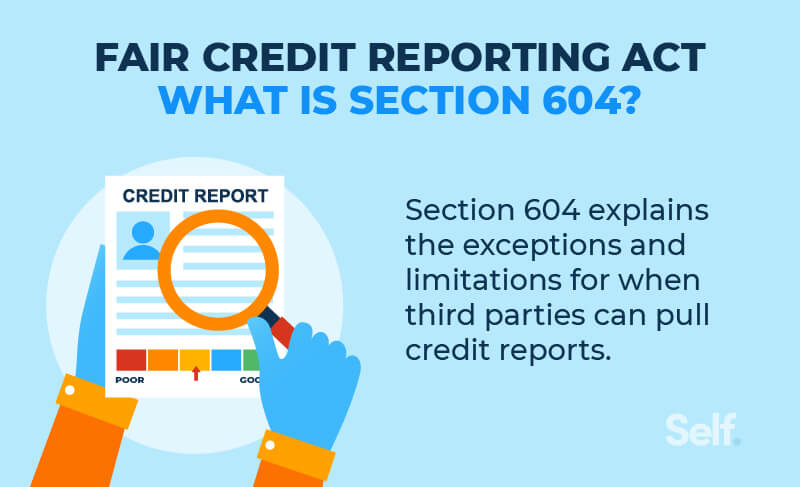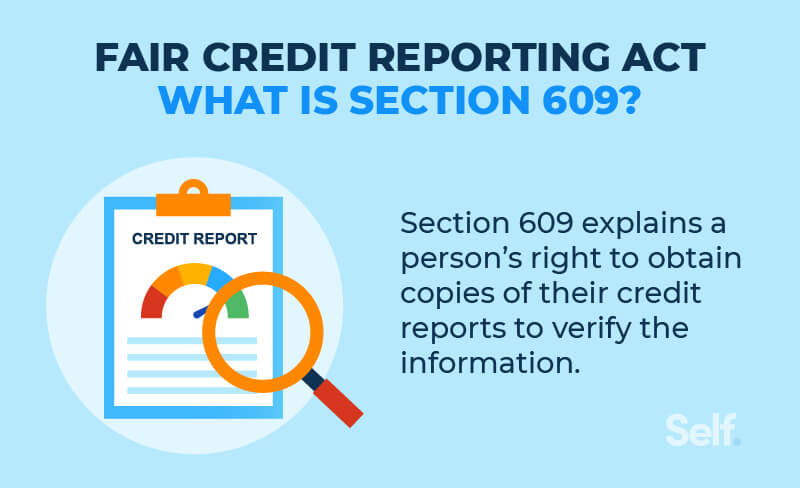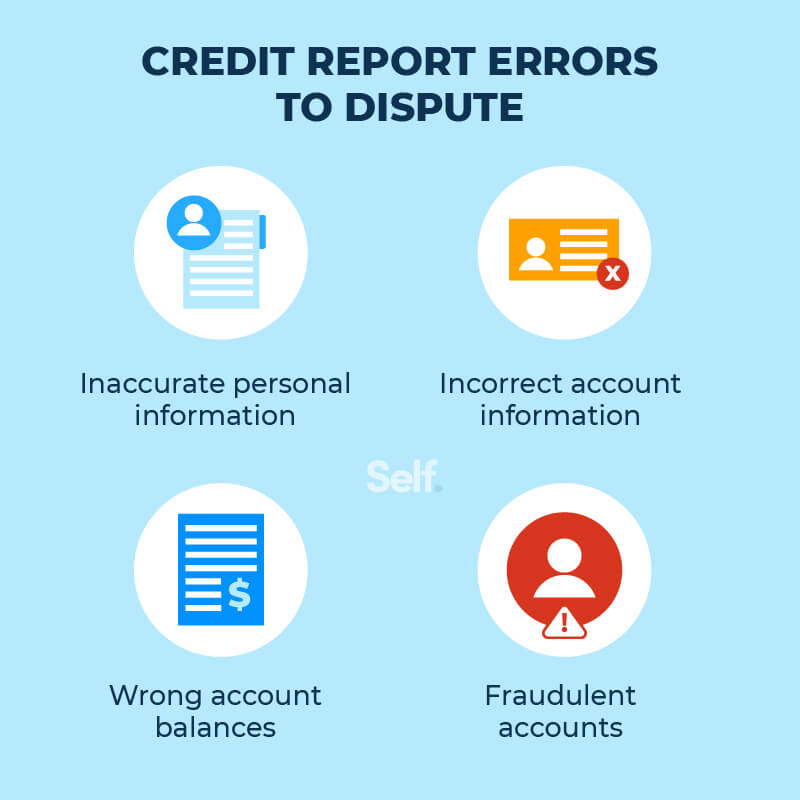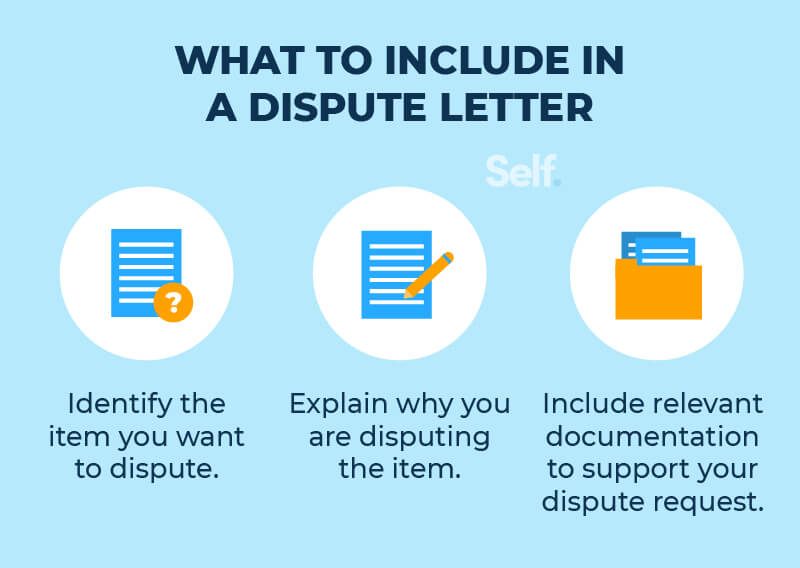FCRA Section 604 vs. 609: Which Supports Your Dispute Letter?
By Ana Gonzalez-Ribeiro, MBA, AFC®
Published on: 03/22/2022
Published on: 03/22/2022
Section 604 and Section 609 of the Fair Credit Reporting Act (FCRA) have similar numbers and refer to consumer reports and/or disclosures. As a result, they’re often confused. But they have different purposes, and only Section 609 will support a dispute letter.
Under the FCRA, Section 604 defines the circumstances under which a consumer reporting agency may furnish a consumer report.[1] This section is titled “Permissible purposes of consumer reports.”
In short, Section 604 covers other agencies and entities that want to see your credit report, while Section 609 deals with your right to see it. Here is some more specific information on both sections:


You can get a free credit report once a year under federal law at annualcreditreport.com. But what if you already received your free copy earlier in the year and are worried about new potential errors on your report? In this case, you can fill out a 609 letter to request a current version of your report under Section 609 of the FCRA.
A 609 letter can also allow you to request information that may not be included in a free copy of your credit report, such as signed original credit applications and dates when checks were cashed. Such information can prove useful in identifying and, if necessary, disputing any inaccuracies you may find on your credit report.
The 609 letter itself is not a dispute letter. But it can be used to access information that will allow you to identify errors — if you find any. This, in turn, can form the basis for a dispute letter. The following is a sample letter.
[Name of credit reporting agency]:
In accordance with my rights under the Fair Credit Reporting Act, Section 609, I hereby request the following information from my credit report: [insert the information you're requesting here].
I am referencing my original contract with [name of lender], which includes my signature. I understand that it is my right to view this material under Section 609.
I was made aware of this information by [name of collections agency or account name(s) and account number(s)].
My identification information is as listed below:
Social Security number: [insert social security number here]
Date of birth: [insert your date of birth here]
Attached is a copy of my credit report. Please note that I have circled the information for which I am seeking verification. I have also attached additional documents that may help with this process [list attached documents such as driver’s license, passport, utility bills, etc., which are attached].
If you are not able to verify the account with the original contract, I am requesting that the information be removed from my credit report within 30 days.
Thank you for considering my request. I look forward to your response.
Sincerely yours,
[Your name]
[Your address and contact information]

Other inaccurate information to keep an eye on includes potential balance errors and data mistakes, such as incorrect credit limits.
You may be a victim of fraud or identity theft, or you may just have inaccurate negative items in your credit history.
A 2012 FTC study found that one in four consumers found errors on their credit reports that might affect their credit scores. The good news is that four in five consumers who filed disputes got some modification to their credit report as a result.[2]

When filing a credit report dispute, you can contact the credit bureaus by phone, online, or by mail.
You’ll want to include information such as letters from creditors with information on how your account should be corrected, documents showing deferment or forbearance, or canceled checks showing payments for which you haven’t been credited. If you have been a victim of fraud, it is important to include a copy of the FTC identity theft report or policy report showing that your account has been compromised.
You can pay a credit repair company to file a dispute for you, but a credit repair company can’t do anything you yourself can’t do for free. You can’t remove negative information if it’s accurate, and neither can they. If they say they can, or offer you guarantees, that’s a red flag. There are credit repair scams out there that might ask you to pay upfront or dispute accurate information on your credit report.
Scams that promise you a new identity or advise you to provide false information could even involve you unwittingly in identity theft and implicate you in a crime that can lead to jail time.[4]
If you find inaccurate information, you can dispute it with the credit bureaus and potentially improve your credit score by removing negative marks that are inaccurate and/or are the result of fraud.
Under the FCRA, Section 604 defines the circumstances under which a consumer reporting agency may furnish a consumer report.[1] This section is titled “Permissible purposes of consumer reports.”
In short, Section 604 covers other agencies and entities that want to see your credit report, while Section 609 deals with your right to see it. Here is some more specific information on both sections:

Section 604
Section 604 describes when credit bureaus are allowed to release your credit information to different entities, such as:- Prospective lenders or creditors
- Potential employers
- State child-support enforcement agencies
- In response to a court order or subpoena
- The Federal Deposit Insurance Corporation (FDIC) or National Credit Union Administration (NCUA) in the role of conservator, receiver, or liquidating agent for an insured deposit.

Section 609
Section 609 states that consumer reporting agencies (credit bureaus) are obligated to provide a consumer with all the information in their credit file except:- The first five digits of the consumer’s Social Security number.
- Anything concerning credit scores or “other risk scores or predictions relating to the consumer.”[1]
What is a 609 letter?
A 609 letter is a document you can use to contact the three major credit bureaus (Equifax, Experian and TransUnion) to request a copy of your credit reports.You can get a free credit report once a year under federal law at annualcreditreport.com. But what if you already received your free copy earlier in the year and are worried about new potential errors on your report? In this case, you can fill out a 609 letter to request a current version of your report under Section 609 of the FCRA.
A 609 letter can also allow you to request information that may not be included in a free copy of your credit report, such as signed original credit applications and dates when checks were cashed. Such information can prove useful in identifying and, if necessary, disputing any inaccuracies you may find on your credit report.
The 609 letter itself is not a dispute letter. But it can be used to access information that will allow you to identify errors — if you find any. This, in turn, can form the basis for a dispute letter. The following is a sample letter.
609 letter template
[Date of letter][Name of credit reporting agency]:
In accordance with my rights under the Fair Credit Reporting Act, Section 609, I hereby request the following information from my credit report: [insert the information you're requesting here].
I am referencing my original contract with [name of lender], which includes my signature. I understand that it is my right to view this material under Section 609.
I was made aware of this information by [name of collections agency or account name(s) and account number(s)].
My identification information is as listed below:
Social Security number: [insert social security number here]
Date of birth: [insert your date of birth here]
Attached is a copy of my credit report. Please note that I have circled the information for which I am seeking verification. I have also attached additional documents that may help with this process [list attached documents such as driver’s license, passport, utility bills, etc., which are attached].
If you are not able to verify the account with the original contract, I am requesting that the information be removed from my credit report within 30 days.
Thank you for considering my request. I look forward to your response.
Sincerely yours,
[Your name]
[Your address and contact information]

Check the accuracy of your credit reports
When going through your credit report, there are a number of potential errors to lookout for. Credit information from someone else with a similar name, address, or Social Security number might show up on your report. You may not have been properly credited for an account you paid off, or perhaps a debt was improperly listed more than once.Other inaccurate information to keep an eye on includes potential balance errors and data mistakes, such as incorrect credit limits.
You may be a victim of fraud or identity theft, or you may just have inaccurate negative items in your credit history.
A 2012 FTC study found that one in four consumers found errors on their credit reports that might affect their credit scores. The good news is that four in five consumers who filed disputes got some modification to their credit report as a result.[2]
Dispute errors on your credit report
You can dispute errors on your credit report by contacting the credit bureaus, explaining the reasoning for the dispute in a credit dispute letter, and waiting for the dispute review process to conclude. Typically, the credit bureaus will have 30 days from receiving your dispute to review it. However, if you send the credit bureaus more information regarding your dispute, it may take them an additional 15 days, totaling 45 days. The credit bureaus must notify you of their findings within five business days of completing the investigation.[3]
When filing a credit report dispute, you can contact the credit bureaus by phone, online, or by mail.
You’ll want to include information such as letters from creditors with information on how your account should be corrected, documents showing deferment or forbearance, or canceled checks showing payments for which you haven’t been credited. If you have been a victim of fraud, it is important to include a copy of the FTC identity theft report or policy report showing that your account has been compromised.
You can pay a credit repair company to file a dispute for you, but a credit repair company can’t do anything you yourself can’t do for free. You can’t remove negative information if it’s accurate, and neither can they. If they say they can, or offer you guarantees, that’s a red flag. There are credit repair scams out there that might ask you to pay upfront or dispute accurate information on your credit report.
Scams that promise you a new identity or advise you to provide false information could even involve you unwittingly in identity theft and implicate you in a crime that can lead to jail time.[4]
Review your credit report
A 609 letter can help you verify information and identify errors on your credit report. It can also uncover “hidden” details that don’t show up in your free credit report. Section 604 explains the circumstances in which the credit bureaus can release your credit information to various entities.If you find inaccurate information, you can dispute it with the credit bureaus and potentially improve your credit score by removing negative marks that are inaccurate and/or are the result of fraud.
Sources
- Federal Trade Commission. “Fair Credit Reporting Act,” https://www.consumer.ftc.gov/articles/pdf-0111-fair-credit-reporting-act.pdf. Accessed November 29, 2021.
- Federal Trade Commission. “In FTC Study, Five Percent of Consumers Had Errors on Their Credit Reports That Could Result in Less Favorable Terms for Loans,” https://www.ftc.gov/news-events/press-releases/2013/02/ftc-study-five-percent-consumers-had-errors-their-credit-reports. Accessed November 29, 2021.
- Consumer Financial Protection Bureau. “If a credit reporting error is corrected, how long will it take before I find out the results?” https://www.consumerfinance.gov/ask-cfpb/if-a-credit-reporting-error-is-corrected-how-long-will-it-take-before-i-find-out-the-results-en-1339/#:~:text=Consumer%20reporting%20agencies%20have%205,your%20free%20annual%20credit%20report. Accessed February 4, 2022.
- Federal Trade Commission. “Debt Relief and Credit Repair Scams,” https://www.ftc.gov/news-events/media-resources/consumer-finance/debt-relief-credit-repair-scams. Accessed February 4, 2022.
About the author
Jeff Smith is the VP of Marketing at Self Financial. See his profile on LinkedIn.About the reviewer
Ana Gonzalez-Ribeiro, MBA, AFC® is an Accredited Financial Counselor® and a Bilingual Personal Finance Writer and Educator dedicated to helping populations that need financial literacy and counseling. Her informative articles have been published in various news outlets and websites including Huffington Post, Fidelity, Fox Business News, MSN and Yahoo Finance. She also founded the personal financial and motivational site www.AcetheJourney.com and translated into Spanish the book, Financial Advice for Blue Collar America by Kathryn B. Hauer, CFP. Ana teaches Spanish or English personal finance courses on behalf of the W!SE (Working In Support of Education) program has taught workshops for nonprofits in NYC.
Written on March 22, 2022
Self is a venture-backed startup that helps people build credit and savings.
Self does not provide financial advice. The content on this page provides general consumer information and is not intended for legal, financial, or regulatory guidance. The content presented does not reflect the view of the Issuing Banks. Although this information may include references to third-party resources or content, Self does not endorse or guarantee the accuracy of this third-party information. Any Self product links are advertisements for Self products. Please consider the date of publishing for Self’s original content and any affiliated content to best understand their contexts.